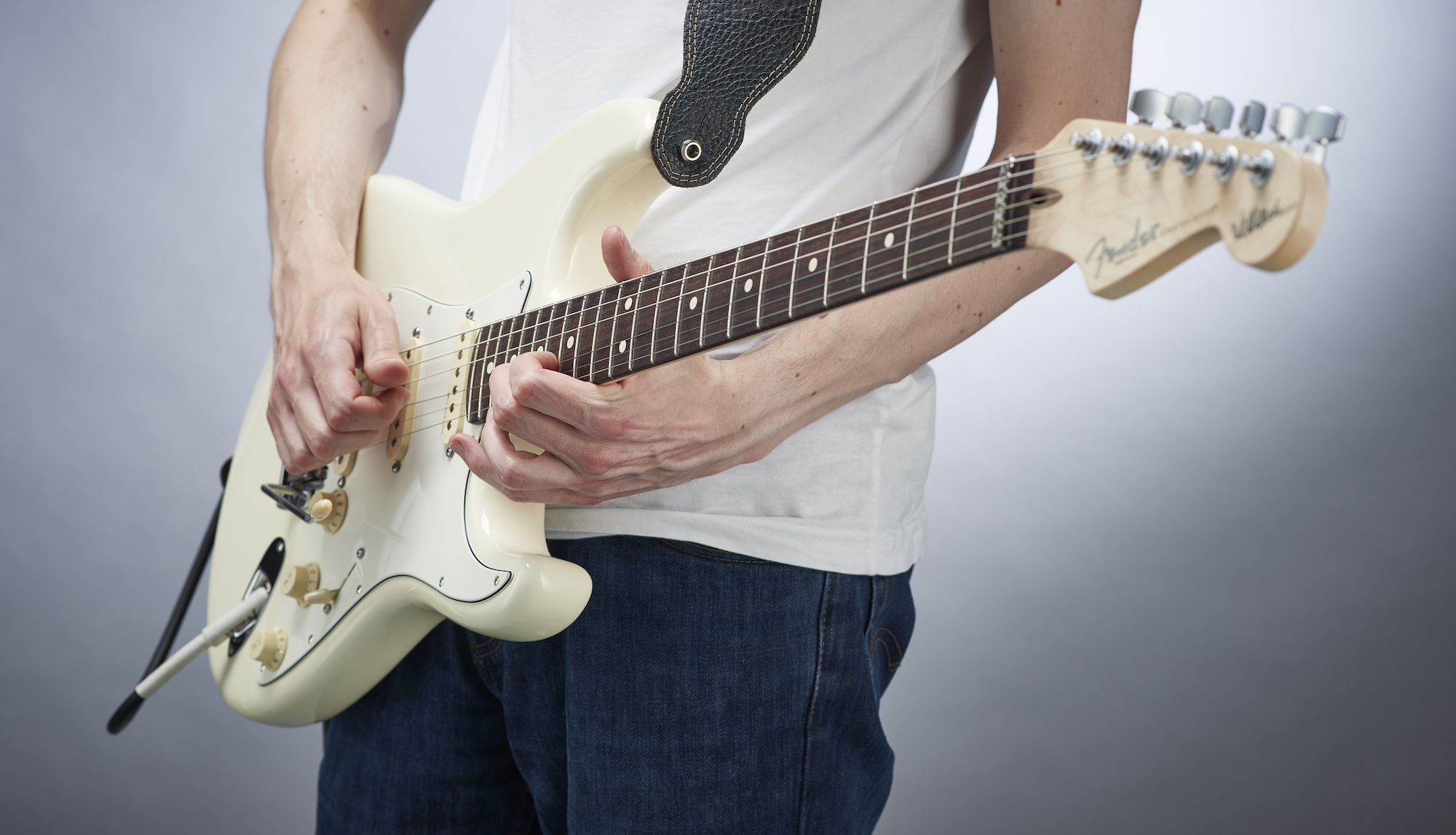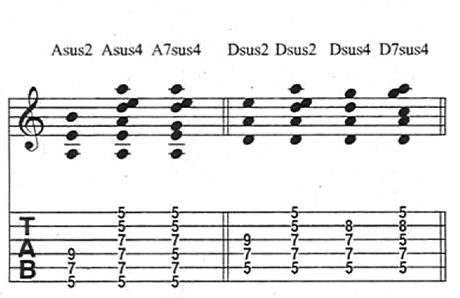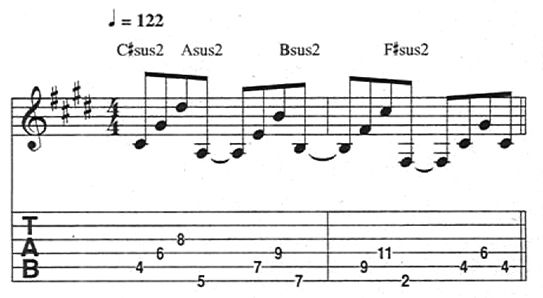Suspended Chords: Liven Up Your Rhythm Playing with Open-Position and Movable Voicings
Noted for their versatility, suspended chords are a welcome addition to any player’s repertoire.

Noted for their versatility, suspended (or sus) chords are a welcome addition to any player’s repertoire. You can throw them into your arrangements to liven up any chord progression containing standard major or minor triads, or you can make them the center of a progression to lend it an overall airy ambience.
In this lesson, we’ll start with open-position voicings and move on to movable voicings, to give you a complete overview of these useful chords.
Open-Position Voicings
The two most commonly used suspended chords are the suspended 2nd (sus2) and the suspended 4th (sus4). Both of these are formed by removing the 3rd from the standard major (1–3–5) or minor (1–b3–5) triad and replacing it with a different degree of the scale.
For the sus2 chord, the 2nd replaces the 3rd (1–2–5); for the sus4 chord, the 4th replaces the 3rd (1–4–5). Another popular suspended option is the lush-sounding 7sus4 chord, in which the 3rd of a dominant 7th chord (1–3–5–b7) is replaced by the 4th (1–4–5–b7).
Now that you have an understanding of the theory behind these chords, let’s play a few. Figure 1 is a listing of the most common open-position suspended voicings.
When playing through them, try committing their shapes to memory by relating them to the major and minor shapes you already know. (Since these chords are often used in conjunction with major, minor or dominant chords, fingerings may vary depending on your tonal center.)

Our first song example pays homage to one of the masters of the suspended chord, Led Zeppelin’s Jimmy Page. Much like Zeppelin’s “Tangerine,” Figure 2A uses both sus2 and sus4 chords to add color tones to an Am chord.
To perform the initial Am–Asus4–Am movement, keep the initial Am depressed while adding and releasing the 4th (D on the 2nd string) with your pinkie. Figure 2B is a simple three-chord figure based on Tom Petty’s “Free Fallin’.”
To execute the Dsus2 seen in both measures, use your 1st finger to fret the A on the 3rd string and your 3rd finger for the 2nd string’s D.

Similar to Def Leppard’s “Love Bites,” Figure 3 closes things out with some ambient open-chord shapes. Before attempting to play through the exercise as a whole, familiarize yourself with each voicing, making sure every note sustains clearly when struck. Then continue on with the arpeggiated picking patterns for each chord.

Movable Voicings
Now let’s take things a step further by exploring movable voicings - chords that can be moved up and down the fretboard without having to alter your fingering.
First, let’s take a look a the most commonly used movable suspending voicings, as shown in Figure 4. Solely for simplicity’s sake, we’ve listed them all in 5th position.
Chords rooted on the E string are shown to the left to the double bar, while those to the right are rooted on the A string. To get used to these voicings, try running each one up the neck chromatically, or one fret at a time, beginning at fret one.

Our first song-based example uses the wide-stretching sus2 voicings that open up each chord set in Figure 4. These shapes - often referred to as stacked power chords - flavor tunes like the Dave Matthew’s Band’s “Satellite,” Pantera’s “Floods" and the Police’s “Message in a Bottle,” which is outlined in Figure 5.
Pay strict attention to hand position. If you place your thumb in the middle of each voicing (i.e. behind the 6th fret for the opening C#sus2), you can reach back to fret the bottom note with your 1st finger and forward to fret the top note with your pinkie. Play the middle note with your 2nd finger.

Figure 6, based on Van Halen’s “Panama,” features A-rooted sus4 chords. Use your 1st finger to fret the bottom note of the first E chord while barring across the next three strings (D, G and B) with your 3rd finger.
For the sus4 that follows, simply add the A note (10th fret, B string) with your pinkie. The two slash chords (B/E and A/D) are best fingered by barring across the fretboard with your 1st finger and using your 2nd finger to fret the note on the G string and your 3rd finger to fret the D-string note.

Figure 7, similar to ELO’s “Fire on High,” is a great workout for both hands, kicking off with a majestic B7sus4 that resolves to a Bm on beat two. Use your 2nd and 3rd fingers to fret the non-barred notes in both chords. Go slowly at first, employing alternate strumming (down-up, down-up, etc.) to navigate the quick rhythms.

Get The Pick Newsletter
All the latest guitar news, interviews, lessons, reviews, deals and more, direct to your inbox!
Guitar Player is the world’s most comprehensive, trusted and insightful guitar publication for passionate guitarists and active musicians of all ages. Guitar Player magazine is published 13 times a year in print and digital formats. The magazine was established in 1967 and is the world's oldest guitar magazine. When "Guitar Player Staff" is credited as the author, it's usually because more than one author on the team has created the story.
“Write for five minutes a day. I mean, who can’t manage that?” Mike Stern's top five guitar tips include one simple fix to help you develop your personal guitar style
"It’s like you’re making a statement. And you never know where it’ll lead." Pete Thorn shares the tip that convinced Joe Satriani he was the right guitarist for the SatchVai Band










